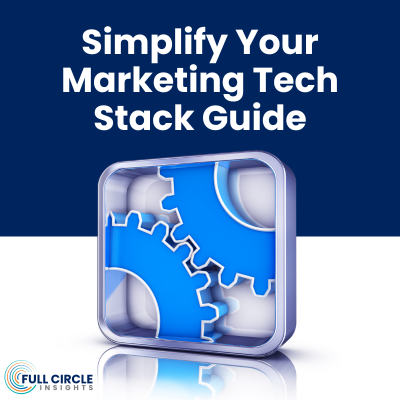Although marketing campaign attribution is critical for businesses aiming to optimize their campaigns and drive meaningful results, most attribution strategies are broken. From failing to account for offline conversions to relying only on one attribution model, your attribution strategy could be hindering your marketing success.
This blog post dives into various strategies for cleaning up your marketing campaign attribution and offers a roadmap for effectively allocating credit to different touchpoints along your customer journey.
Without further ado, here are four steps for fixing your broken marketing campaign attribution strategy:
- Explore comprehensive B2B attribution models
- Develop your own attribution system
- Refine your strategy
- Break down data silos and foster collaboration
1. Explore Comprehensive B2B Attribution Models
In our last blog post, we discussed a trend in over-reliance on single-touch attribution. To improve marketing campaign attribution, you must first grasp the intricacies of advanced, attribution models to ensure you select the best ones for your business.
Familiarize yourself with the following multi-touch attribution models. Each model has its unique way of distributing credit across touchpoints, providing a nuanced view of customer interactions:
- Linear multi-touch: Assigns equal credit to each customer touchpoint.
- Time decay multi-touch: Gives more credit to touchpoints closer to conversion, focusing on the latter part of the marketing funnel.
- W-shaped multi-touch: Assigns 30% credit each to the first touch, the mid-way, and the final (conversion) touchpoints with the outstanding 10% split among other touchpoints.
- U-shaped multi-touch: Allocates 40% of the credit to the first and last touchpoints, with 20% distributed among other touchpoints.
- Full path multi-touch: Common in B2B, this complex model adds the lead creation touchpoint to the W-shaped model, giving a detailed view of the customer journey.
2. Develop Your Own Attribution System
After you’ve assessed the different types of attribution models out there, you’re ready to adapt one or more of these models to your needs to develop your own system. Here’s how we recommend doing that:
- Assign an attribution leader to oversee and organize the process based on marketing performance data.
- Educate stakeholders, ensuring they understand the benefits of multi-touch attribution.
- Use a central performance tracking solution to monitor all marketing channels on a single platform.
- Gather complete data on conversions and campaigns for a comprehensive overview of customer touchpoints and their impact on conversions.
- Link touchpoints with the buyer’s journey to allocate credit appropriately across all touchpoints.
- Create a strategy for defining ROI, as this is an especially important step for accurately measuring ROI for larger B2B businesses.
- Combine offline attribution to include the impact of offline channels like field events and conferences.
- Use account-based attribution to accurately track the complex B2B customer journey involving multiple decision-makers.
3. Refine Your Strategy
Once you’ve developed an attribution process, there are several things you can do to refine it, such as investing in attribution tools, tracking links, and implementing a closed-loop marketing system.
The easiest and most effective thing you can do for more accurate marketing and sales attribution is investing in attribution software. A tool that’s specially designed to help overcome attribution modeling challenges, like Full Circle Insights for Salesforce, can provide sophisticated insights that will make your attribution more transparent.
Another tactic for refining your attribution model is to use UTM parameters in links you share online to keep track of your most successful content. Leverage UTM parameters for links across your marketing funnel, from lead generation to conversion.
Our final tip for optimizing your attribution strategy is implementing a closed-loop marketing system. Rather than separating your marketing and sales teams, have them work together towards a common goal of making the company money. Closed-loop marketing can help your sales and marketing teams identify which activities are most effective in generating sales.
4. Break Down Data Silos and Foster Collaboration
Data silos and a lack of organizational alignment can hinder your sales attribution’s accuracy. When teams within your organization keep data to themselves, they obscure the effectiveness of marketing efforts.
Break down silos and foster collaboration by encouraging departments to share information and establish processes that facilitate a seamless flow of data. By doing so, you’ll gain more accurate attribution for your marketing efforts.
Wrapping Up: How to Clean Up Marketing Campaign Attribution in 2024
Improving marketing campaign attribution isn’t a one-and-done initiative. It’s an ongoing process that requires a strategic approach and a combination of advanced models, optimization strategies, and organizational alignment. By implementing these techniques, your business can gain a comprehensive understanding of its customer journey, optimize its marketing campaigns, and ultimately drive more impactful results.



